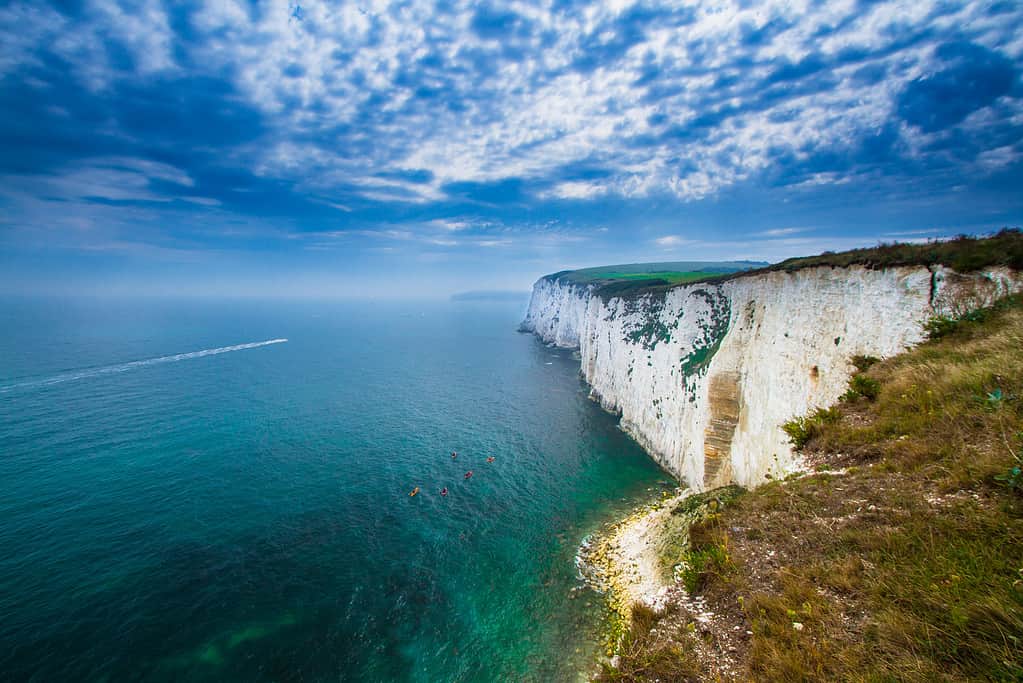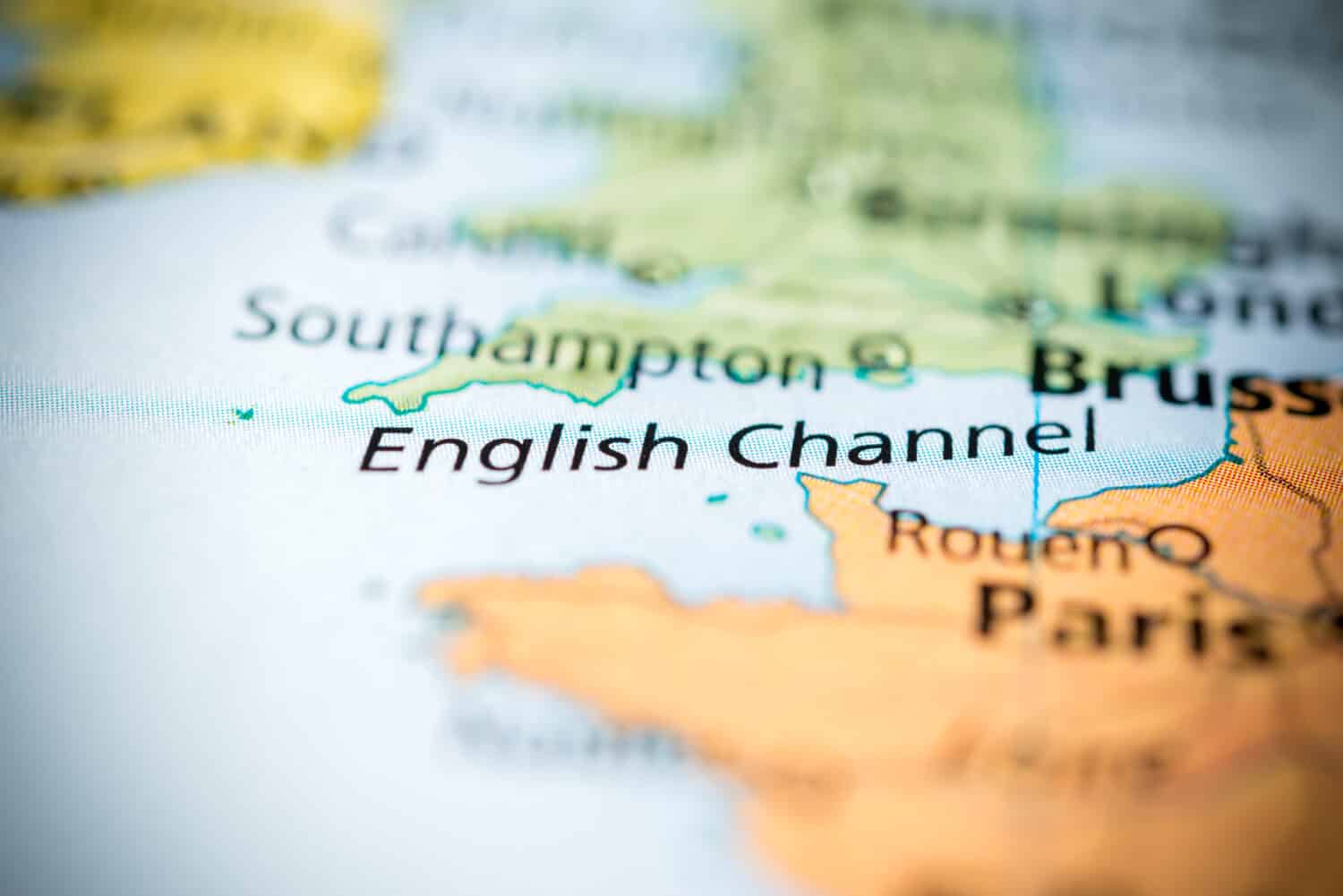
The famous White Cliffs of the English Channel.
©AmArtPhotography/iStock via Getty Images
How deep is the English Channel? The English Channel has a depth of 571 feet. The English Channel is a natural waterway and a main thoroughfare for water traffic. Hurd Deep is the name of an underwater trench which is located in the the deepest part of the English Channel . The English Channel is 150 miles wide and 21 miles in width at its most narrow point. In comparison to other famous waterways the English Channel’s is less deep. The English Channel serves as an accessible waterway from the Atlantic Ocean to the North Sea through the Dover Strait.
How does the English Channel compare to depths in other waterways?
For size and depth, comparisons will use 2 famous waterways, The Strait of Gibraltar and the Mariana Trench. The Strait of Gibraltar is the only natural link between the Atlantic Ocean and the Mediterranean Sea, with a depth of between 1,000 to 3,000 feet. The Mariana Trench is located east of the Mariana Islands in the Western North Pacific Ocean, and its deepest point is 36,200 feet. The lowest sea level recorded worldwide is at the Mariana Trench. The English Channel is a high traffic area and serves many important uses for traveling above the water. But by no account is it the deepest waterway recorded worldwide.

The waters of the English Channel can be rough.
©/Shutterstock.com
The Depth and Importance of the Channel Tunnel under the English Channel
The Channel Tunnel is also known by the name “Eurotunnel” to most Europeans. 200 years of construction finalized in 1994 for a complete Channel Tunnel. The narrowest point of this well known rail tunnel is 20 feet wide. The Channel Tunnel has three separate systems for safety. Two of the tunnel systems are used solely for rail traffic to and from England and France. The third system is a central tunnel which is used for security and services. The tunnel itself is 31 miles long, and 24 miles of it is under the water. The deepest the tunnel goes is 276 feet below sea level. England and the European mainland both have a fixed link with the Channel Tunnel.
The English Channel is not a River
The English Channel is a funnel and 3 rivers flow in, but it is not classified as a river. There are subtle differences between a river vs. a channel. Even in a colder winter the English Channel rarely freezes. Water flow is constantly coming into the channel and has a tempered atmosphere. The English Channel is a shallow inland sea. Inland seas are continental bodies of water that encompass a very large area, and it has surrounding dry land.
Water quality makeup in the English Channel
The water that flows together from the rivers and the salinity of the Atlantic Ocean makes the water very brackish. The English Channel is a marvel of nature. The 3 rivers that flow into the English Channel account for an abundance of unique hydrologic, oceanographic, and bio-geographic features. A sample of the seabed earth tell much about the waterway. The nice part about the English Channel is without having to go to the deepest depths to get the sample, you just have to take a sample of the sand on the shoreline and the sample will be the same.
Swim the English Channel
Brackish water quality combines with a fair amount of wind in the English Channel. People continue to marathon swim there. England does not prohibit swimming in the English Channel. It is a marathon swim for eager and agile swimmers, and those successfully who successfully undertake the challenge are many. Unsuccessful undertakers of the challenge have perished. The English Channel is an ever changing 21-mile swim, but sometimes a bigger challenge to the swimmers than they expect. Contact The Channel Swimming Association if that task is on your bucket list.
Thank you for reading! Have some feedback for us? Contact the AZ Animals editorial team.








